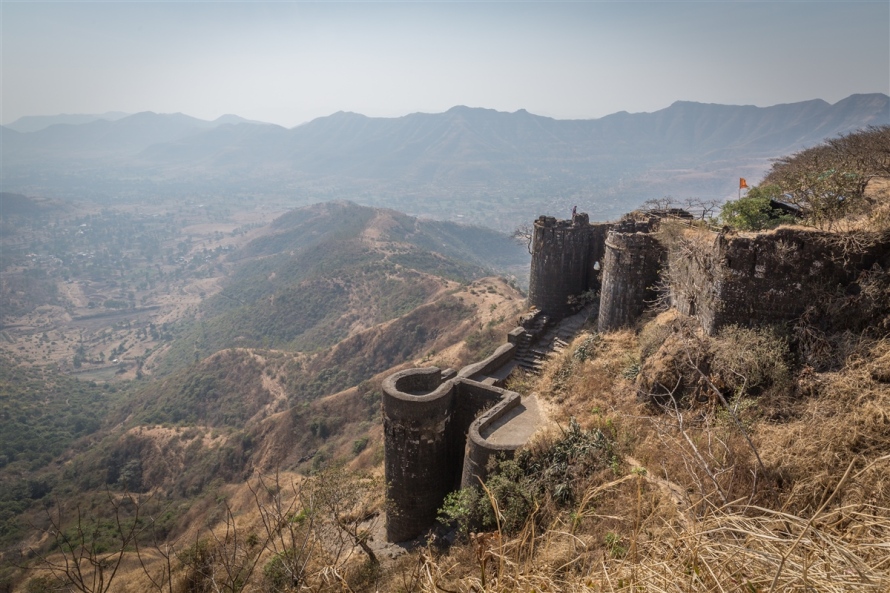
Sinhagad (also known as Sinhgad) is the nearest hill fort to Pune, located around 25 km southwest of the city. The fort stands on a high point of the Sayhadris, 1,315m above sea level and rising more than 700m from the plain below. A metalled road, often in a bad state after the monsoon rains, takes you almost to the top marked by a communications tower.
You can also access the top of the fort from the base of Sinhgad village. The trek involves a one-way walk of 2.7 km (1.6 miles), during which you will gain about 600 m (1950 feet) in elevation. I was perhaps tempted for a few seconds to do the hike, but glad sense prevailed !
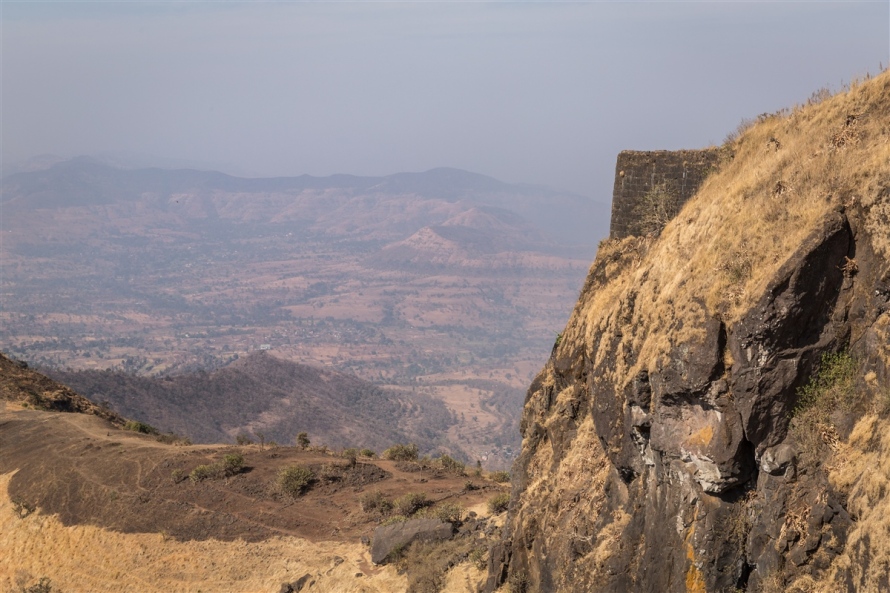
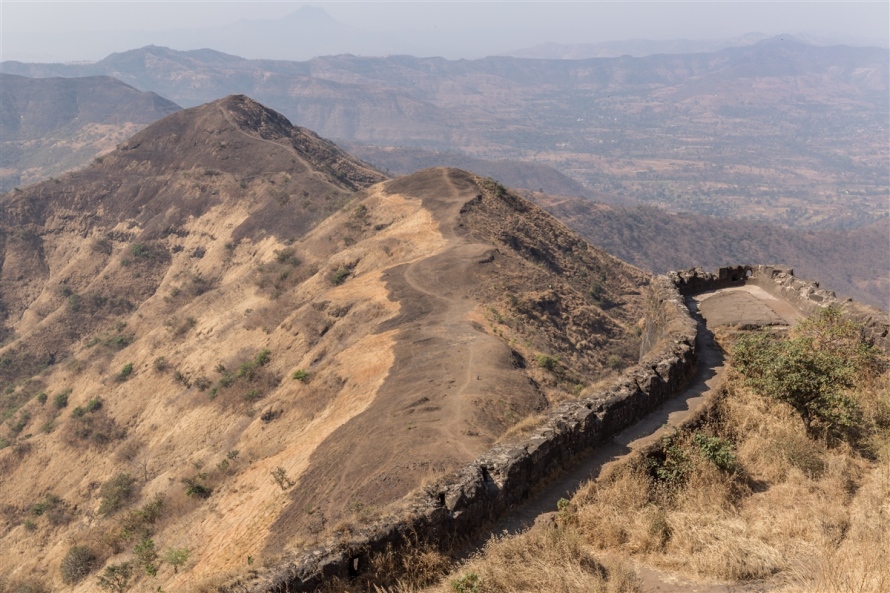
The three-pronged fort of Sinhagad is ringed with steep cliffs from which rise sheer walls of basalt more than 40m high, reinforced by ramparts with regularly spaced towers.
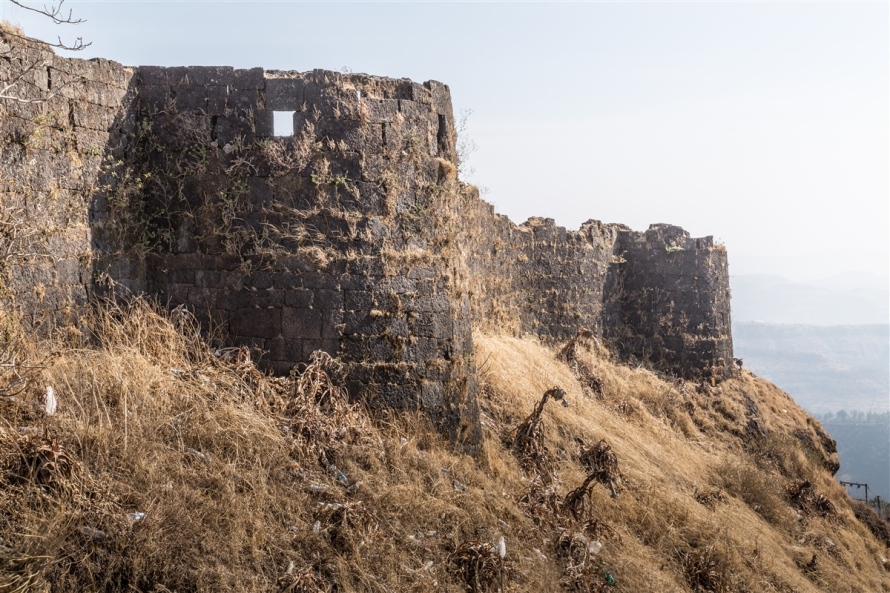
The hill top is reached by a path from the north-east (to the right of the car park as you look at the summit), passing through three gates into the undulating and irregular interior of fort.
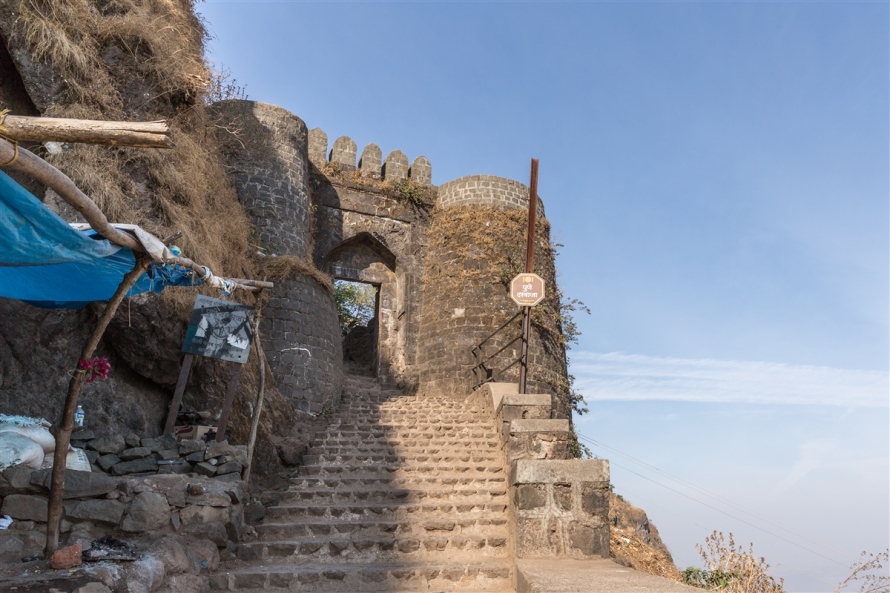

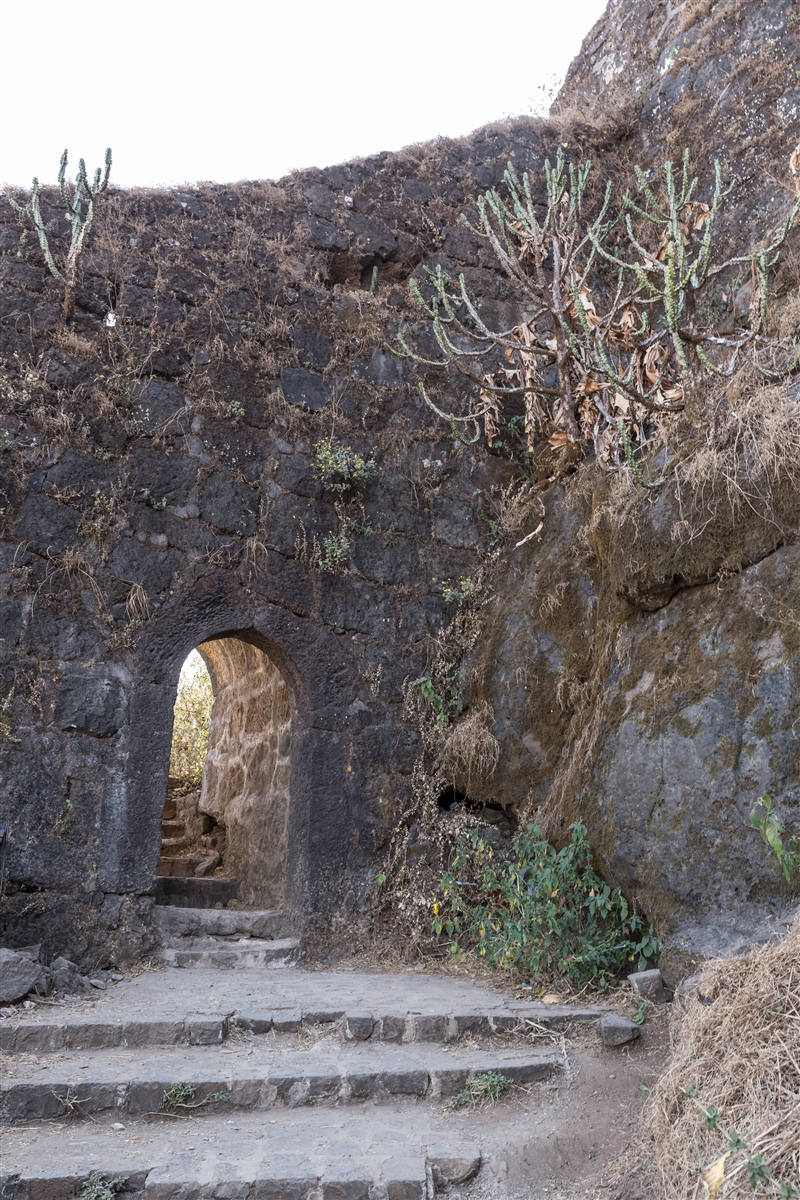

The fort interior retains a few buildings of interest; a memorial to Tanaji, the tomb of Rajaram Chhatrapati, military stables, a brewery, animation store (Barud Khana), and a temple of goddess Kali.
The history of Sinhagad (known originally as Kondhana) goes back to approx 1340, when the forces of Delhi emperor Muhammad Tughluq marched against it. In 1486 it was one of several forts in the Pune region that fell to Malik Ahmad, founder of the Nizam Shahi dynasty.

Shahaji Bhosale, as the commander of Ibrahim Adil Shah I, was entrusted with control of the Pune region and the fort, and in 1647 his son Shivaji held the stronghold, renaming it Sinhagad (meaning “Lion Fort”).

The citadel subsequently changed hands on several occasions between the Marathas and Mughals. It saw attacks by the Mughals in 1662, 1663 and 1665. In 1664, Shahistekhan, a Mughal general, tried to bribe the people of the fort to hand it over to him, but was unsuccessful.
Through the Treaty of Purandar, the fort passed into the hands of the Mughal army chief “Mirzaraje Jaysingh” in the year 1665. Then in 1670, Chhatrapati Shivaji Maharaj reconquered the fort for the third time, and the fort stayed under the Maratha rule until 1689 A.D.

The 1670 capture by Shivaji was the scene of some quite daring exploit, with the forces under the direction of Tanaji using ropes to raise troops and animals up the sheer sides of the hill. Shortly after 1689 it was yet again under Mughal rule before the Marathas headed by Sardar Balkawade recaptured it once again in 1693.

In 1703 Aurangzeb then captured the fort, only for it to once again return to the Marathas in 1706. After this period of constant changes in ownership, the fort remained under the Maratha rule till the year 1818, when the British conquered it. The formidable and stratgeic location of the fort meant that it took the British three months to capture it, which was longest it took them to win any fort in Maharashtra. The fort was later used as a warm weather retreat for the European residents of Pune.
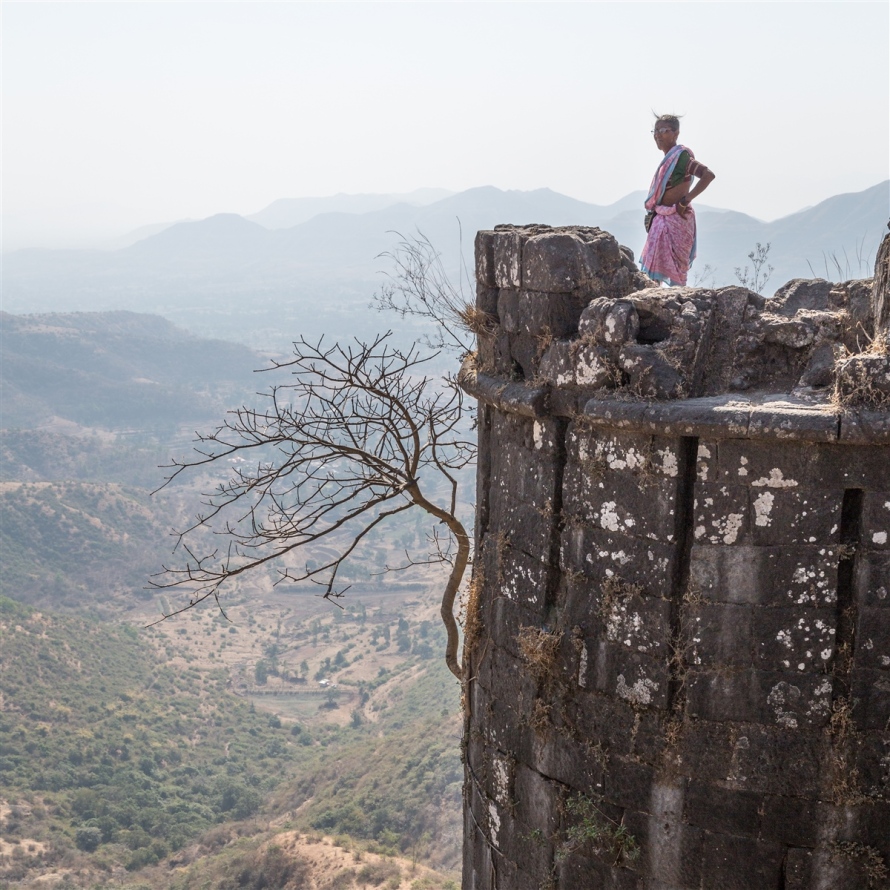
This was in fact my second visit to Sinhagad. Back in June 2006 I found myself in India for only the second time having not long returned from a holiday doing the oh so touristy “Golden Triangle”. This time it was a business trip, and a fellow co-worker and good friend Amit took me to see the fort as a weekend day trip away from Pune. India was pretty new to me then, I would never have predicted the subsequent 12 year association with the country, let alone the 18 trips that were to follow !
Sinhagad has changed quite a bit during those 12 years. Much of fortifications have been repaired and renovated, and in places completely new walls and other structures have been built. The interior of the fort has also seen changes, with more permanent structures having been built and the whole area in general seeming more populated than I recall back in 2006.

Rebuilding of Sinhagad fort defences with new stone
Being so close to Pune and also easily accessible, Sinhagad is probably the most popular hill fort destination from the city. If you are pushed for time and not feeling adventurous then it’s well worth visiting, although personally I prefer the more remote hill forts in the area such as Tikona, which are a little bit more challenging to access and scale, but all the more enjoyable because of that.
The list of hill forts around Pune seems almost limitless, next year I plan to visit a lot more of the :-).
You’re welcome to ‘Like’ or add a comment if you enjoyed this blog post. If you’d like to be notified of any new content, why not sign up by clicking the ‘Follow’ button.
If you’re interested in using any of my photography or articles please get in touch. I’m also available for any freelance work worldwide, my duffel bag is always packed ready to go…
KevinStandage1@googlemail.com
Categories: India, Maharashtra, Sinhagad Fort















You probably mean Tikona?
LikeLiked by 1 person
I did 😀 at least the link takes you to the right place. Will correct tomorrow, thanks so much for pointing it out !
LikeLiked by 1 person
Beautiful snaps. Sight becomes more mesmerising in monsoon. If you are staying more, then check for Rajgadh, harishchandragad and Bhimashankar trek which I loved most.
Thanks for sharing…
LikeLiked by 1 person
Thanks…my routine seems to take me to India in Jan and Feb, in part because during the UK summer I’m headving involved in archaeological excavations in this country. But seeing more forts, and doing some trekking, is definitely on the wish list 🙂
LikeLiked by 1 person
nicely written and photography
LikeLiked by 1 person
Thank you, and thanks for stopping by !
LikeLike
Visit in monsoons or right after. its breathtakingly beautiful. Also as someone suggested, try to visit Rajgad,Torna, Harishchandragad.
There are somr trekking groups in Pune that organize such hikes like Yuvashakti.
LikeLiked by 1 person
Namaste ! I have been to India during and after the monsoons, unfortunately my schedules don’t allow that now so I tend to go in Jan/Feb which I know is not ideal for the countryside. Rajgad, Torna, and Harishchandragad are all on the list, plus quite a few others ! I doubt though that the trekking groups in Pune do many trips early in the year, but it is something I’m going to look into for early 2019. Do you have any contact details for these groups ?
Thanks for your comment(s), and for visiting my blog ! Best wishes – Kevin.
LikeLiked by 1 person
Hi,
These are their facebook pages. 20 years back I have trekked with Yuvashakti and had good experience. https://www.facebook.com/Giridarshantreks/
https://www.facebook.com/trekswithyuvashakti/
LikeLiked by 1 person
To further Explore Sinhgad fort you can watch our Youtube Vlog. Sinhgad fort trek Vlog
LikeLike